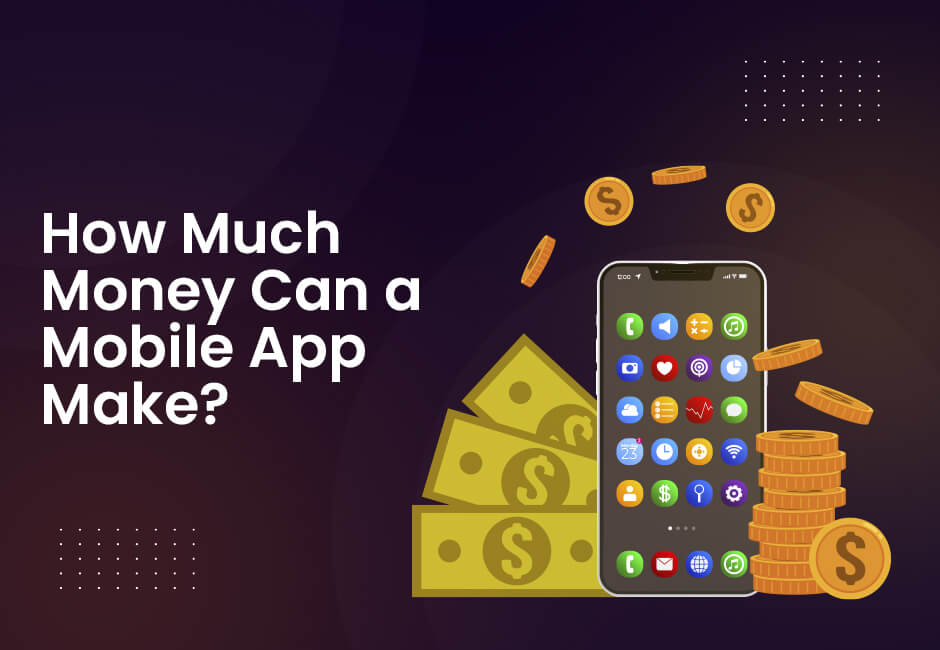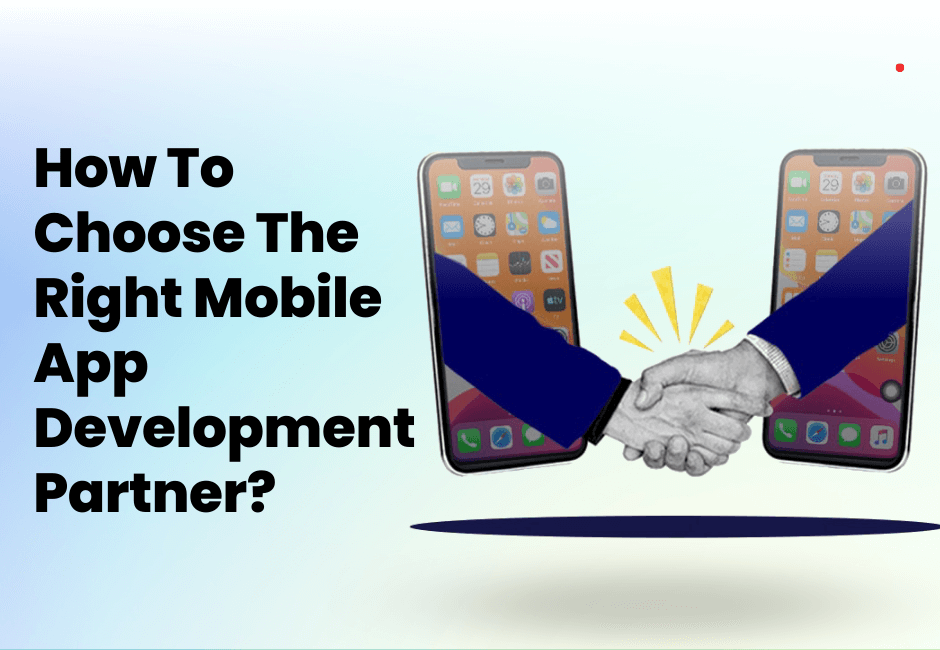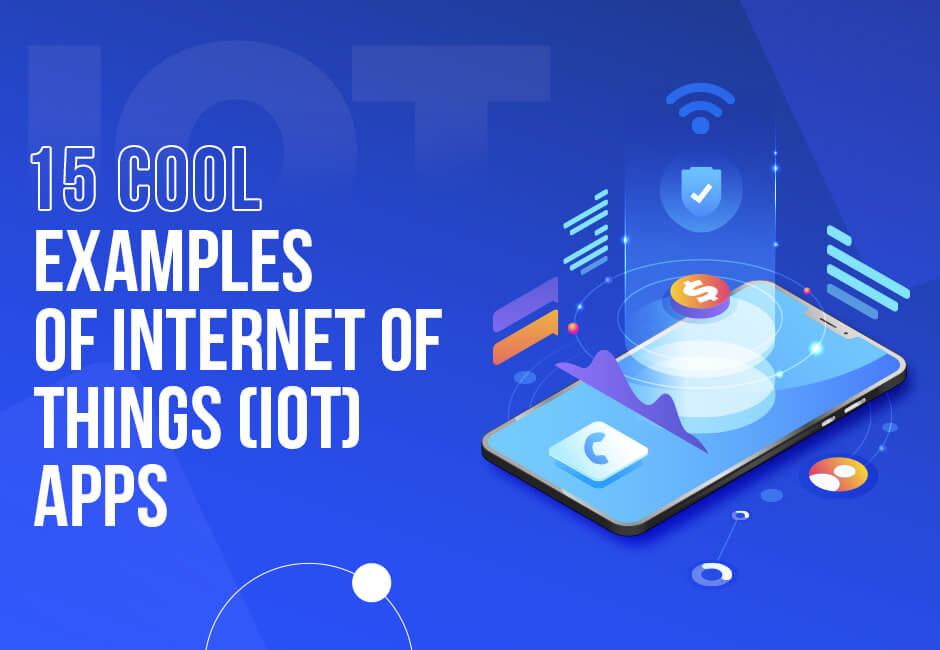
Accelerate every mortgage closing and connect instantly with over 140,000 notary signing agents & attorneys for mobile & RON eClosings.
The mobile app industry has been active in the last couple of years due to higher convenience and the range of functionalities and entertainment it provides. Nowadays, most brands launch customized mobile apps to serve their clients better. Apps are rapidly growing in the Google Play and Apple App Store, surpassing the 5.5 million mark recently. Some of them earn more than others. But the question is, how much money can a mobile app make? We have the answer to this question in our blog.
Here, we will discuss factors like your app category, monetization plan, the app platform of your choice, and many other factors. If you are considering developing an app that can make money, give our article a shot to get the most precise idea of the revenue potential of your app.
Current & Future Market Trends Of App Monetization:
- A survey revealed that, by the end of 2022, the total number of apps on the Google Store was just below 3 million. The number of apps has already crossed 3.5 million, and the number is expanding very rapidly.
- Gaming apps contribute 70% of the total revenue earned by the apps, and the trend will likely continue till 2024.
- In-app monetization statistics show that 8% of US apps find revenue through paid models. In comparison, 25% of the app-generated income in the US stems from advertisements, encompassing formats such as video ads, popup ads, and display ads, among others.
- An intriguing trend is the anticipated rise in revenue from in-app advertising, which climbed by about 4% from 2021 to 2022. Equally captivating, in-app purchases are forecasted to surge by 8.4% within the same period, underscoring an evolving landscape of user engagement and app monetization.
- AI-powered apps will dominate the market. By leveraging machine learning, NLP, and computer vision, these apps will continue to mint more than generic mobile apps.
- AR and VR-powered apps will continue to make more money, and the total revenue of these apps is expected to reach around $73 billion in 2024.
- The expansion of IoT (Internet Of Things) apps will likely continue, and according to IDC, a tech analyst company predicts that the number of users using IoT apps will reach nearly 42 billion by 2025.
- In the coming years, the rise of mobile commerce will continue as mobile commerce sales will cross $3.5 trillion at the end of 2023.
- By the end of 2023, consumer spending on mobile apps will reach $200 billion, and most of it will be spent in the form of in-app purchases.
- The revenue of mobile apps will touch $613 billion in 2025, using various kinds of monetization strategies.
- In 2022, over 142 billion apps were downloaded and installed from the iOS App Store.
How Much Money Can An Android Or iOS App Can Make- A Comparative Analysis Of Their Target User Base:
So far, Android and iOS are the two most popular operating systems available for mobile app development. The choice of your mobile app operating system can significantly influence the revenue earning potential of your app. The reason is the differences iOS and Android operating systems have in their market share. A recent survey reveals that globally, the Android mobile app platforms dominate the market with more than 72% market share. On the other hand, iOS operating system accounts for only 28%.
One of the primary reasons behind the popularity of the Android operating system is its budget-friendliness. The open-source nature of the Android operating system and lower cost of development attract a larger pool of user base of startups. Compatibility and ease of integration with third-party services further enhance Android’s appeal. On the other hand, iOS is known for its security and affluent user base. So, the financial capability of your target audience can influence your decision to choose either Android or iOS. Android operating system is ideal for generic mobile apps, while iOS is a go-to choice for feature-rich, complex mobile apps.
But this market scenario is not similar everywhere. Countries like the USA, Canada, Australia, Japan, Denmark, Norway, and Sweden have more iOS app users than Android mobile platforms. In contrast, users from Western and Eastern European countries, South America, and India prefer Android over iOS. So when launching an app, the location of your target audience will significantly impact your app monetization model. Recent growth in Apple’s app store in countries from Asia and Africa also indicates that the number of iOS app users will soon surge in these regions. You should develop your app monetization strategy and choose the platform after analyzing the reference of your target audience from these regions.
Now, let’s see the list of countries with the most iOS app users and the highest number of Android app users in two different tables respectively:
| Country | iOS Market Share |
|---|---|
| The United States Of America | 56.74% |
| Japan | 53.1% |
| Switzerland | 55.92% |
| Sweden | 55.33% |
| Canada | 54.2% |
| Country | Android Market Share |
|---|---|
| India | 99.4% |
| Indonesia | 96.0% |
| Pakistan | 95.6% |
| Bangladesh | 93.6% |
| Nigeria | 92.9% |
The table clearly showcases the popularity of Android apps among the user base of developing nations from Asia and Africa. On the other hand, iOS apps have an affluent user base in the Western hemisphere. Therefore, the region of your target audience will help you find out how much money you can earn through an app.
Another factor influencing your app platform choice is your app niche. The percentage of users that tends to choose iOS or Android can help you find out how much money you can earn through an app. Now let’s see which app category prefers which platform.
| App Category | Percentage Of Apps on iOS | Percentage Of Apps On Android |
| Games | 64% | 36% |
| Business | 45% | 55% |
| Education | 41% | 59% |
| Lifestyle | 40% | 60% |
| Entertainment | 37% | 63% |
| Productivity | 35% | 65% |
| Social Networking | 32% | 68% |
| Utilities | 30% | 70% |
| Health & Fitness | 28% | 72% |
| Shopping | 27% | 73% |
| Travel | 25% | 75% |
Analyzing this table, it’s quite clear that gaming applications dominate the iOS platform, closely followed by business and education applications. On the Android platform, social networking, utilities, and health & fitness apps lead the way. These trends clearly showcase the OS preferences of different businesses. Businesses with generic app requirements tend to choose Android, and for complex app features, iOS is a popular choice. In addition, iOS users are likely to have higher incomes, making them more likely to invest in paid apps that have high-end and inventive applications. When considering app development, understanding these dynamics is paramount. Creating an app prefered by the platform’s user preferences increases your earning probability. It also gives you a clearer outlook on how much an app can make.
So, as you can see, the amount of money a mobile app can make depends on the choice of the operating system, and many factors can influence this choice. Factors like the region’s purchasing power, app usage growth rate, and monetization strategy can further affect your operating system’s choice. Another factor is the growth rate. According to Sensor Tower, Africa and the Middle East are expected to have the highest growth rates in mobile app users in the coming years. It’s important to note that iOS users spend more money on apps than Android users. So, paid apps are best suited for the iOS user base. Evaluating all this information can help you choose the right OS for your app and develop a successful revenue model.
App Revenue Models For Mobile Apps:
Now you might be wondering how to make money with mobile apps. The key lies in building an efficient app monetization strategy that not only has a competitive edge but also drives customer acquisition. Let’s discuss some of the most popular app revenue models and see their pros and cons.
#1 In-App Advertising: It is the most widely used app revenue model to earn money through a mobile app and is most suitable for free-to-download apps. With this model, you can show third-party ads on your app in exchange for payments from the advertisers. Apps can earn revenue from advertisements, including banner apps, text ads, video ads, and so on. This revenue model has three distinctive methods: cost per click, cost per view, and cost per install. Big brands like Facebook, Twitter, and YouTube earn revenue through in-app advertisements. In addition, gaming apps like Candy Crush, PUBG Mobile, and news apps from the New York Times also use this app revenue model to increase mobile app revenue.
- Advantage: You can implement this revenue model quite effortlessly and efficiently scale your app. It has low upfront costs, which will keep your costs in check.
- Disadvantage: If the ad quality of your mobile app is low, users may feel disconnected or disengaged. In addition, In-app advertisements can harm the user experience and eventually reduce your earnings.
#2 Freemium: The freemium model is getting widely popular among app entrepreneurs as this model allows users to use the basic version of your app completely free. However, users must pay you to unlock all features or content. Users can purchase the add-ons or take the subscription model to use all the app’s features. In this model, the in-app purchase is your primary income source through which you can offer supplement content to users. Ad-free content, premium analysis, and additional tools are some freemium options you can use to motivate users to make in-app purchases. Spotify, Tinder, Zoom and many other brands use this revenue model.
- Advantages: Using a freemium revenue model can help you attract a large user base and if your app is engaging enough it can be a significant source of app revenue.
- Disadvantage: Freemium model has low conversion rates as apps may find it challenging to convert free users into paid subscribers. Furthermore, using Freemium revenue model can produce negative user experience
#3 Subscription: If your app’s features and overall content are reasonable, you may also use a full-subscription model, enabling users to purchase your app with all its features. It is the most conventional way to make money with mobile apps. This model is also commonly referred to as the paid app model. The paid app model allows you to charge users a recurring fee for accessing the app. Netflix, Spotify, and Amazon Prime are some of the prominent brands that use the subscription-based app revenue model.
- Advantage: A predictable revenue stream allows you to maintain a steady money flow. In addition, recurring payments can help you build a loyal customer base.
- Disadvantage: Users may find this model expensive, and if your app’s content quality is not good, you may find it challenging to attract new customers.
#4 Donations: This model relies on users to donate money to support the app. Often NGOs use this revenue model for their mobile apps. In addition, open-source publications, mapping solutions, and research foundations like Wikipedia & OpenStreetMap.
- Advantage: One of the biggest advantages of using donation-based app revenue models is the low upfront cost for procuring revenues. In addition, it can be a great way for you to build a community of supporters and loyal fans.
- Disadvantage: You often find it hard to raise enough money to sustain the app. In addition, it is difficult to create an app idea in which this model works.
#5 Sponsorship: You may find this revenue model valuable for your mobile app if you have particular expertise in professional collaboration and strategic alliance. In this model, you partner with a brand to promote their products and services through your app. Apps like Waze and Accuweather use it as their primary revenue stream.
- Advantage: It can be an excellent way to generate revenues without affecting the user experience.
- Disadvantage: Finding sponsorship can be difficult if you do not have a substantial user base. This model is expensive to implement in reality.
The Top App Categories Which Can Help You Increase Your Mobile App Revenue
Do you know, according to a survey, American netizens spent over 3.8 trillion hours using their apps? Can you imagine the revenue of the apps they are using? However, each app category has a separate user base that affects their earning potential. Conventionally, gaming apps generate more money than other app categories, but the scenario is changing fast. The revenue of non-gaming applications is expected to surpass gaming apps very soon. Let’s discuss how these apps are performing in terms of revenue generation.
- Gaming Applications: The global gaming market is growing at an exponential speed. The console-like graphics, immersive gaming experiences, and dynamic gaming experience have taken over the market by storm, thanks to the advancement of mobile technologies. The global mobile gaming market is expected to exceed $775 billion by 2032. The increasing popularity of gaming applications resulting in consumer spending on mobile gaming apps. In 2022, the consumer spending on mobile gaming apps was $180.3 billion and is expected to reach over $278 billion by 2025.
So, how much money can you earn with your gaming app? It depends on your preferred game genre. Let’s understand the preferred revenue model for each gaming type and the skills required to play it with a table.
| Gaming genre | Preferred revenue stream | Skill level |
| Hyper-casual | Advertisement | Low |
| Simulation | In-app purchases | High |
| Action | In-app purchases | High |
| Casual | In-app purchases | Medium |
- Dating Apps: The popularity of online dating apps has increased significantly in the last couple of years and accounts for consumer spending of around $10.8 billion in 2021, and it is expected to reach 25.7 billion by 2025. The top three brands in this app category have witnessed total downloads of 106 million in 2021. According to experts, the dating app market share will reach around $38 billion by 2027. Most dating apps use an in-app purchase revenue model to earn money. The app purchases of a dating app may include subscriptions, premium GIFs, virtual gifts, unlimited swipes, and many more
- Entertainment Apps: The inception of OTT platforms and live-streaming technologies has significantly increased the popularity of entertainment apps. Due to the lockdown caused by Covid-19, the streaming hours have increased by 32% in 2021 than it’s previous year. And how much money can a mobile app make in this category? The study reveals consumers spent over $267 million on live-streaming apps in the 1st quarter of 2022. The global entertainment app market was worth $136 billion in 2021. Experts believe this app category will surpass $223 billion in 2027. In-app purchases are the most common source of revenue for entertainment apps. In addition, it may include subscriptions, virtual gifts, and extended watch hours. The revenue model of entertainment apps is also expected to evolve. In-app purchases are still the most common way entertainment apps generate revenue, but other models, such as advertising and sponsorships, are becoming increasingly popular.
- Social Apps: It is one of the most lucrative app categories that can help you earn a lot of money through a mobile app. In 2021, around 4.26 billion people used various social apps worldwide, which is only growing. The concepts like Metaverse and digital avatars have revived this app category in the last couple of years. How much money can an app make in this category? Experts believe a lot for sure. According to Statistic, the global social media market was valued at around $324 billion in 2021 globally. In-app purchases are the most common source of generating revenue for this app category. You may consider virtual goods a good in-app purchase option for this category. Global consumer spending on social apps will reach around $43 billion in 2025.
- Health & Fitness Apps: The advent of Covid-19 triggered a notable upswing in the demand for health and fitness apps. In 2019, global installations for health apps stood at 1.97 billion—a figure that surged to an impressive 2.48 billion in 2021, driven by the pandemic’s impact. While the pandemic’s grip subsides and lockdowns ease, the resonance of home fitness persists. Recognizing the significance of work-life equilibrium and pursuing preventive health measures propel the continued growth of home fitness trends. Curious about how much money can an app make in this category? Anticipate substantial returns. The projected market size of health and fitness apps is poised to ascend to a remarkable $24 billion by 2026.
- E-Commerce/Mobile Shopping Apps: You may consider this app category to increase mobile app revenue as it has a rapidly growing market in the future. Perhaps, it is the most popular mobile app category for its revenue-generating capabilities. The global mobile commerce market was valued at $3.56 trillion in 2021 and is estimated to reach $8.36 trillion by 2025. In-app purchases are the most preferred app revenue model for this app category. Consumer spending on e-commerce/mobile shopping apps is also multiplying. According to a report by App Annie, global consumer spending on e-commerce apps was $338 billion in 2021 and is expected to reach $565 billion by 2025.
The following table will help you understand the earning potentials of each app category:
| App Category | Market Size (2022) | Number of Active Users (2022) | Monthly Installs (2022) | Growth Projection (2023) | Current Market Leader | App Revenue Model Used | Last Year Revenue (2022) |
| Gaming Apps | $189.9 billion | 2.9 billion | 30 billion | 10% | Tencent Games | In-App Purchases, Advertising, & Subscriptions | $36.6 billion |
| Dating Apps | $7.4 billion | 600 million | 1.5 billion | 15% | Tinder | Freemium App Revenue Model | $1.3 billion |
| Entertainment Apps | $136.1 billion | 2.5 billion | 20 billion | 10% | Netflix | Subscription-Based Revenue Model | $29.6 billion |
| Social Apps | $323.67 billion | 3.8 billion | 35 billion | 15% | Advertising, In-App Purchases, Sponsorship | $39.4 billion | |
| Health & Fitness Apps | $1.21 billion | 700 million | 100 million | 20% | Fitbit | Hybrid App-Revenue Model(Subscriptions, In-app purchases, advertising) | $3.2 billion |
| E-Commerce/Mobile Shopping Apps | $3.56 trillion | 3.75 billion | 100 billion | 25% | Amazon | In-App Purchases,Advertising,Subscriptions | $470 billion |
We can make this table creative and colorful through attractive design work
Other app categories include education, language learning, tracking & navigation, which can help you make money with an app on a smaller scale. For instance, educational apps can help you explore a profitable market. It is one such app category that can help you increase your mobile app revenue on a limited scale. Take the example of Babbel, a leading language-learning app that earned 188 million pounds in 2021. So, it could be a good choice for your preferred app category. Another app category is Finance, which can help you generate significant money. Robinhood, a leading stock trading app, has over 10 million users, generating over $1 billion in annual revenue. So, these app categories can also be helpful for your business model and help you earn money.
How Much Money Can You Earn Through An App On Other Smart Devices?
The app revenue models for mobile brands mint billions of dollars; however, there are other smart devices. Smart devices like wearables (Smart watches/headsets/eyewear), smart televisions, and virtual assistants need apps too. The global wearable market has reached over 74 billion in 2022, and it will only keep growing. The smart TV market crossed $185 billion in the same year, and the virtual assistant market neared $20 billion. According to statistics, in 2022, apps earned around $7.4 billion from wearable devices, including eyewear, headwear, and wristwear. A report from eMarketer reveals that apps have generated approximately $15.2 billion from the global smart TV market and $4.9 billion from virtual assistant devices.
How Can You Make More Money Through An App-Essential Tips
As an app entrepreneur, you need a comprehensive strategy to make money with mobile apps. You must develop a valuable app with a cutting-edge app monetization model that can outsmart your competitors. Choosing a reliable app development partner is also critical. However, apart from these basic things, you must consider a few more tips and tricks to increase your app earnings. Let’s take a look.
#1 Choose A Trending App Category: Joining a growing trend is essential to boosting your app’s earning potential. Experts estimate that the total number of app downloads will surpass 400 billion in 2024. If you can establish yourself as an authority in your app’s niche, you can capture a significant market share. To ensure success, carefully research your preferred app genre and analyze the target audience for that niche.
#2 Ensure More Customer Recognition For Your App: In the bustling world of apps, user recognition is the golden ticket. But how do you make your app shine brighter? The key lies in genuinely comprehending the “why.” Why should users choose your app in the first place? Does it tackle the challenges that other apps might miss? What unique value do you bring to the table? By understanding these issues, you’re not just enhancing user experience; you’re ensuring your app’s journey toward recognition and revenue.
#3 Choose The Right App Revenue Model: There are several different ways to monetize an app. It would be best to adopt a combination of varying app monetization models to ensure a steady earning from your app. In this process, you must also provide a high user experience for your app to keep your audience engaged. It is a critical balancing task; if you implement it correctly, you can increase your app revenue.
#4 Stand Out From The Crowd: You must design your app to differentiate from the other apps in your niche. As an app entrepreneur, you have the potential to make your app unique and stand out from the crowd. Amidst the sea of apps, yours can be the guiding star that users gravitate toward. Don’t just fit in; embrace your potential to stand out, captivate, and leave a lasting impression. It’s not just about having an app; it’s about shaping a genuinely unforgettable experience.
How Logic Square Technologies Can Help You Make Money With Your App?
If you want to make money with your app, Logic Square Technologies is your perfect partner. Contact us today to know how much money you can earn through an app.
As a leading mobile app development company, we present you with an app built on your vision and business goals and help you make money. Here at Logic Square Technologies, we have an experienced team of professional developers who can make your app super engaging, user-friendly, and high-quality. We can build apps for iOS, Android, cross-platform, native, React, etc. We also offer various effective monetization solutions to help you generate revenue from your app. We provide ongoing support and maintenance to prepare your app for any eventualities. And the best part? Our cost-effective, frugal innovation ensures a faster recovery of your app development cost. Visit our website to learn more about our app development services.
Final Words:
Hopefully, this article has helped you get valuable insights into how much money can a mobile app can make. Developing an app is a piece of cake for any brand, but making money through an app requires conviction, planning, strategy, and expertise. Most importantly, it would help if you had an app development partner to guide and take you through this process. While developing an app, you can increase your mobile app revenue if you focus on quality, excellence, and customer expectations.
FAQ:
1) Can You Make Money With Free Mobile Apps?
Ans: Yes. You can earn money with your free app by using various monetization strategies. In-app advertisement, affiliate marketing, and sponsorships are some of the useful revenue models for your app. These app revenue models for mobile apps can help you make money without charging your target audience. In addition, free apps can earn money through affiliate marketing and sponsorship revenue models.
2) What Are The Most Effective App Revenue Models?
Ans: A brand can use one or more app revenue models or monetization strategies based on the app category, target audience, and overall desired user experience of the app to keep the users engaged. In-app purchases, in-app advertisement, Freemium, subscriptions, donations, Sponsorship, and affiliated marketing content are some of the prominent app revenue models. Implementing a combination of these strategies and understanding your users’ preferences can help you increase your mobile app revenue.
3) Which App Category Makes The Most Money?
Ans: All app categories have the potential to generate substantial revenue. According to our research and market analysis, we found gaming applications, dating apps, entertainment, and shopping categories have a greater potential to earn money through an app. However, the apps from Finance, Banking, Trading, health and fitness also make significant money as they also enjoy a vast pool of users. It would be best if you remembered that success in any app category depends on user engagement, a well-thought-out monetization strategy, and an understanding of market trends.
4) How Can I Increase My Revenue Through An App?
Ans: You can try out a couple of strategies to increase your mobile app revenue. First, you must choose the right app revenue model that suits your app niche and attract new users. In addition, you must offer a variety of monetization options for your app and develop a combination of different revenue models alongside heavy promotions and marketing to make your app visible and viable. For instance, offering limited-time discounts can encourage more users to use your app and increase your earning potential.
5) How Much Money Can A Mobile App Make Per Ad?
Ans: The answer to this question depends on factors like the app category, the app’s popularity, and the number of users using the app. In general, as an app entrepreneur, you can expect to make anywhere from $0.10 to $10 per Ad impression. However, it’s important to note that the earning per ad depends on the location of the app and the niche it belongs to. Additionally, some popular apps can earn significantly more due to their higher price negotiating power. Here are some examples of average revenue per ad impression (eCPM) for different types of mobile ads:
- Banner ads: $0.10-$0.50
- Interstitial ads: $0.50-$2.00
- Video ads: $1.00-$5.00
- Rewarded video ads: $0.02-$0.16
6) How Much Money Can An App Make Per Download?
Ans: According to a survey from Sensor Tower, a leading data survey firm, free apps earn an average revenue of $0.60-$1.20 per install in 2022. However, a few popular gaming applications, like Candy Crush Saga, earned an average of $2.50 per download.
Author
Amarnath Narwal
🎨 Amarnath | Web Designer at Logic Square Technologies | Crafting pixel-perfect designs to elevate your digital presence | Passionate about creativity and innovation. 🚀








